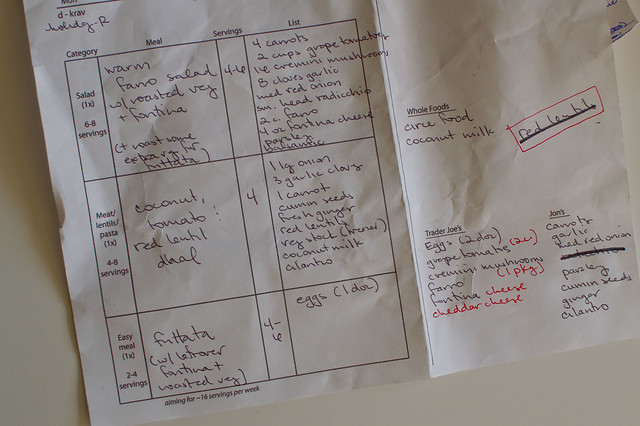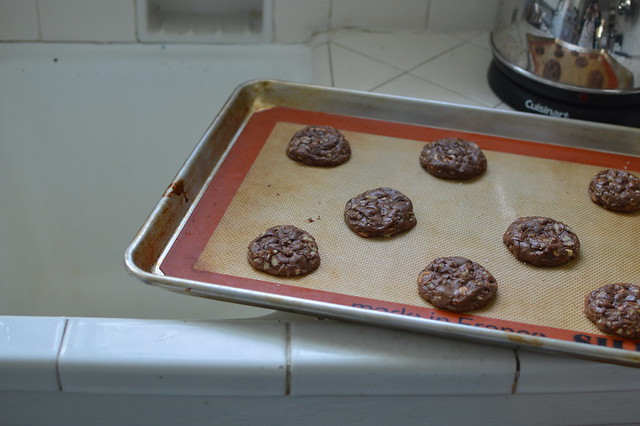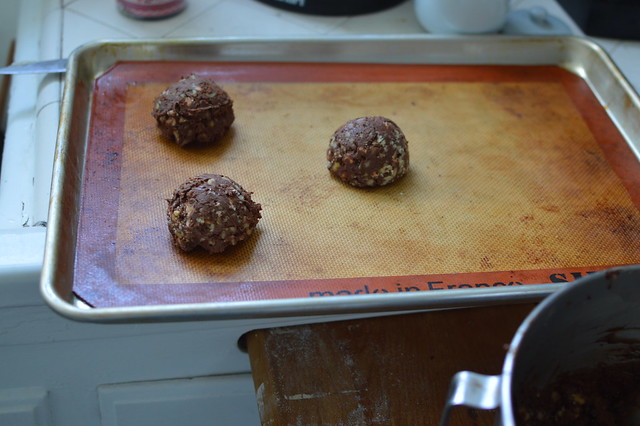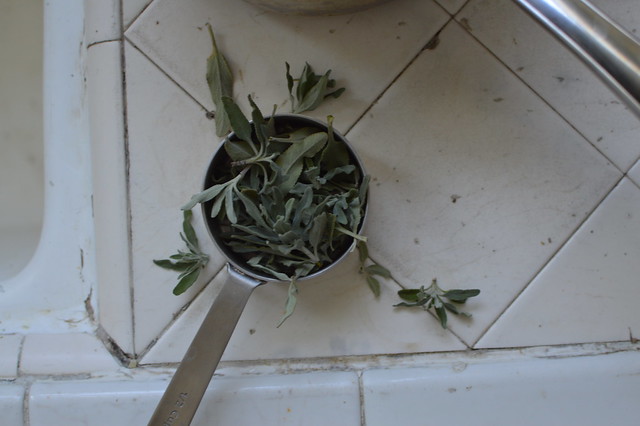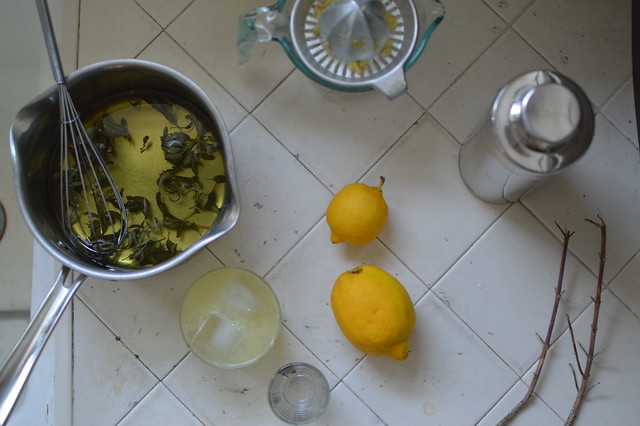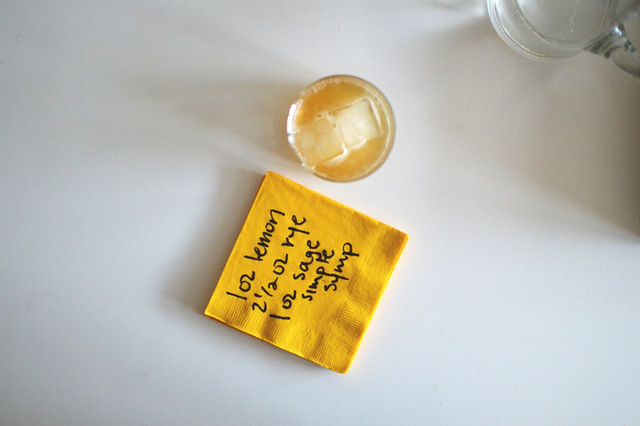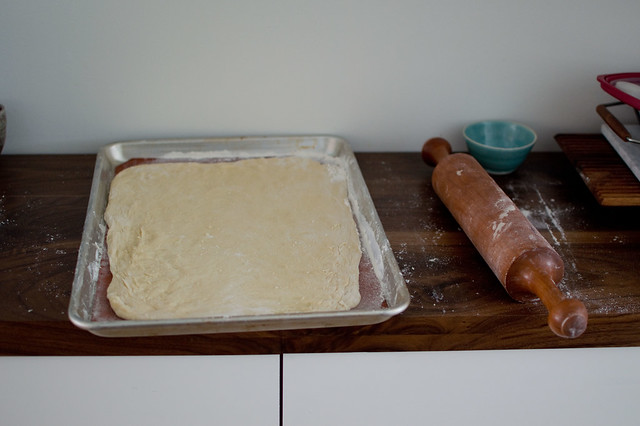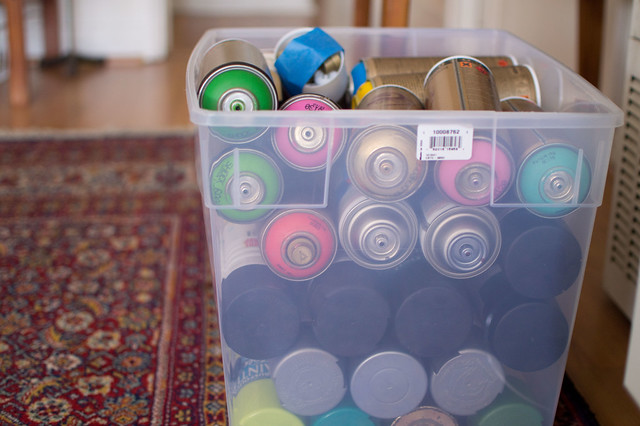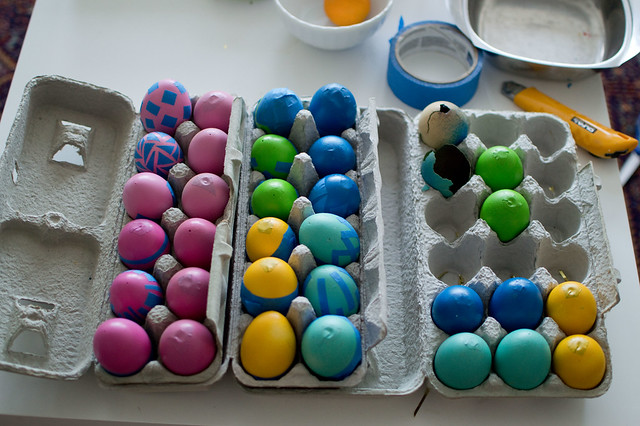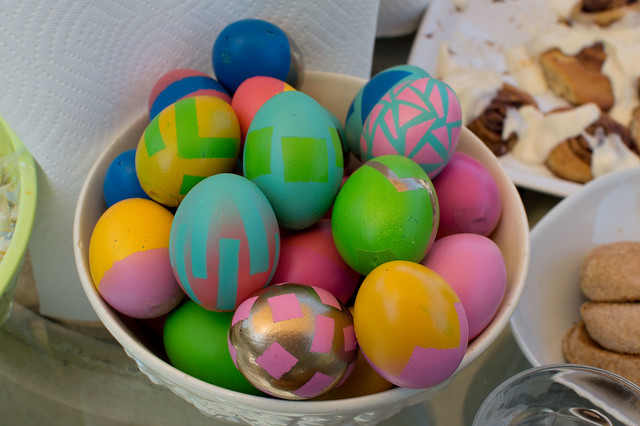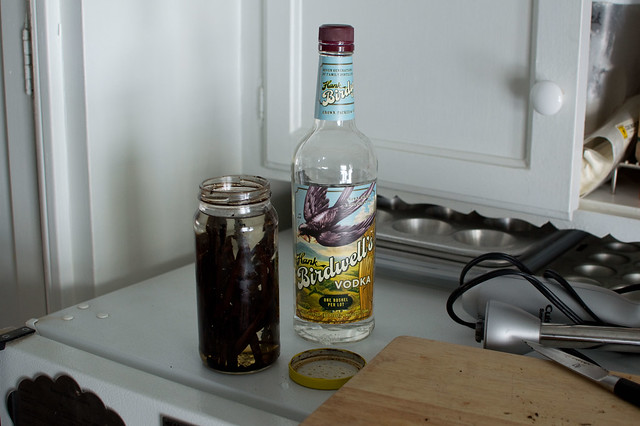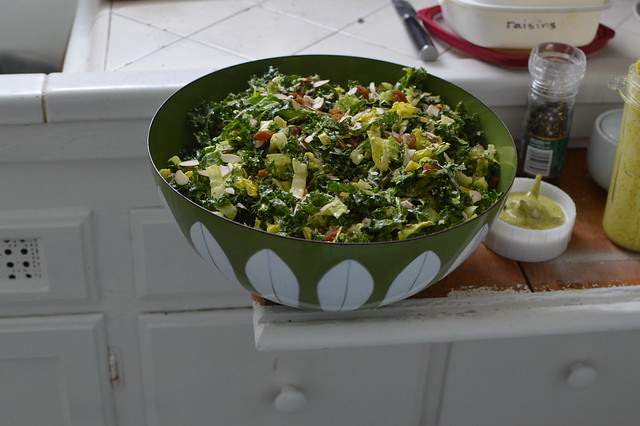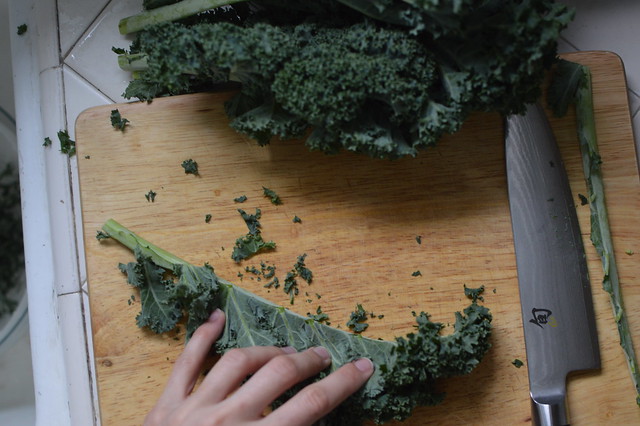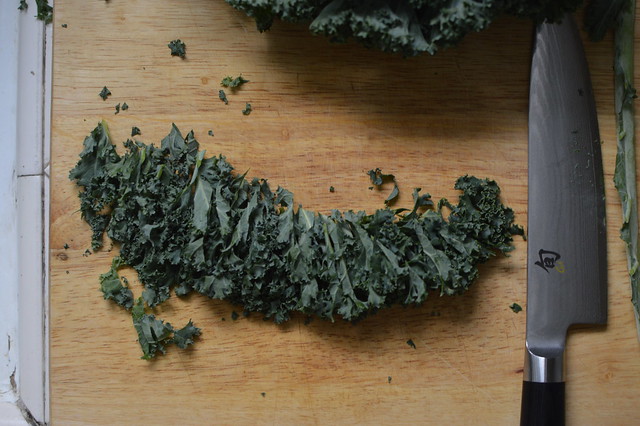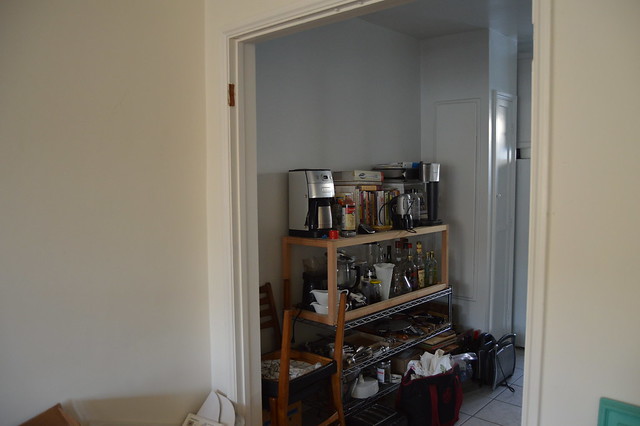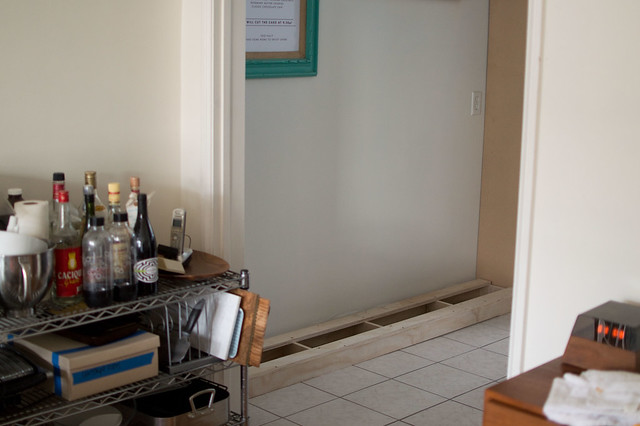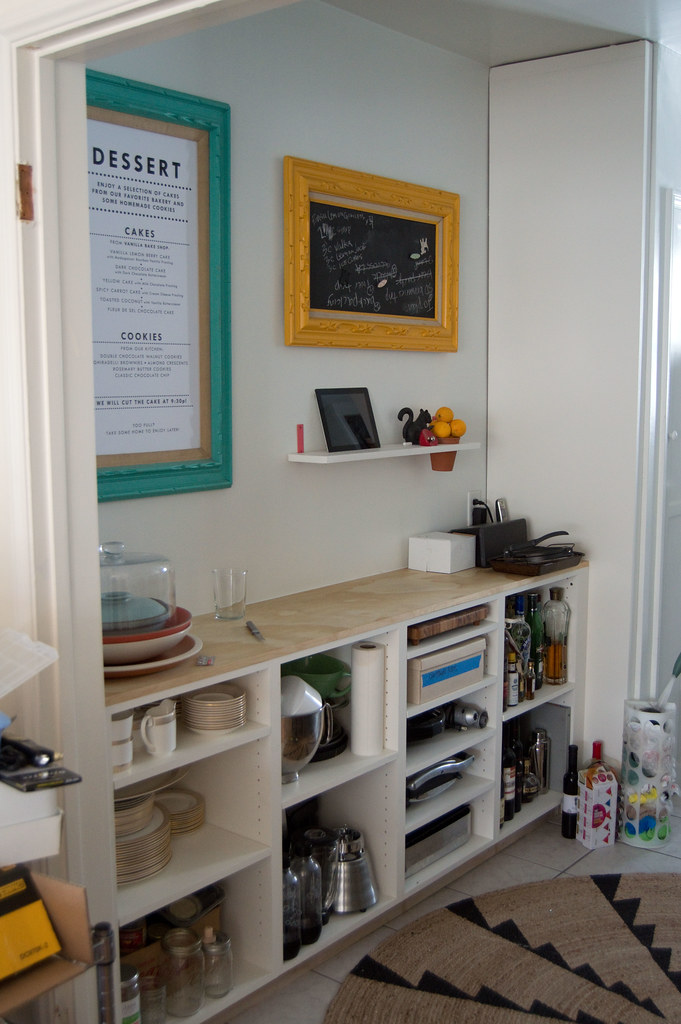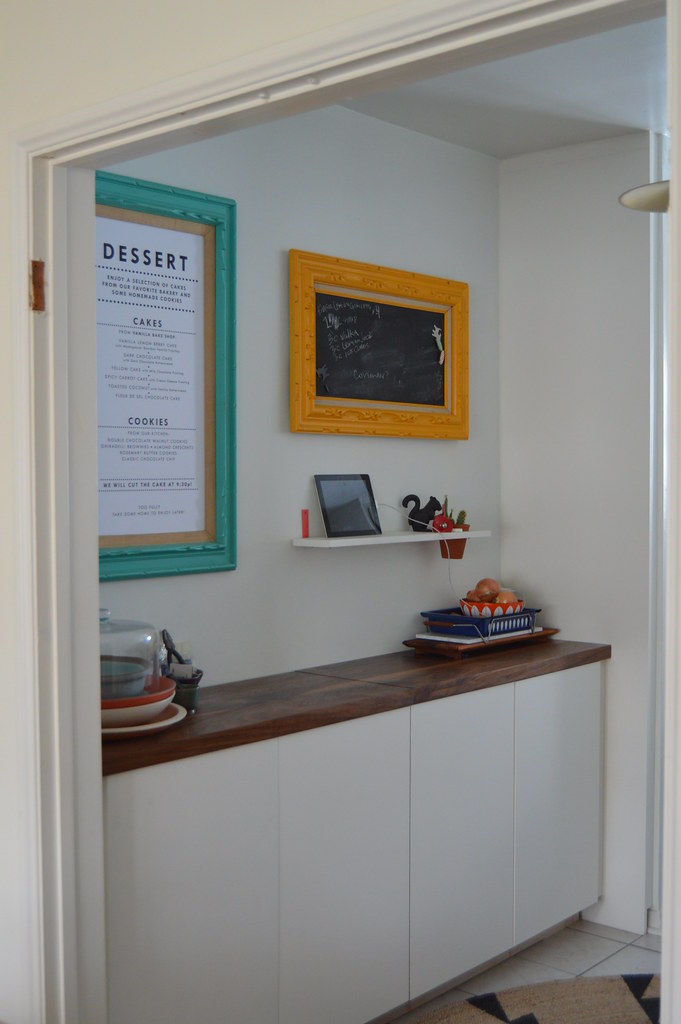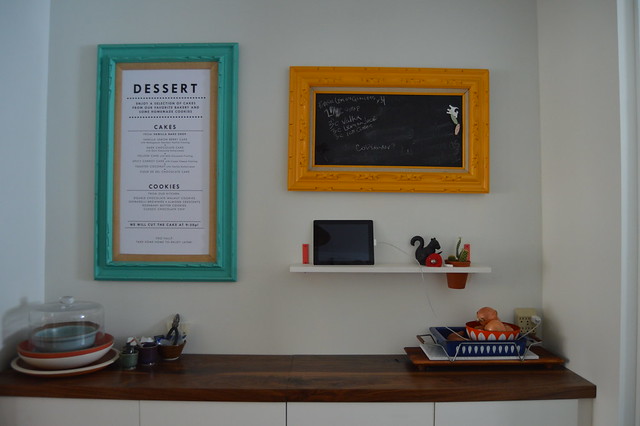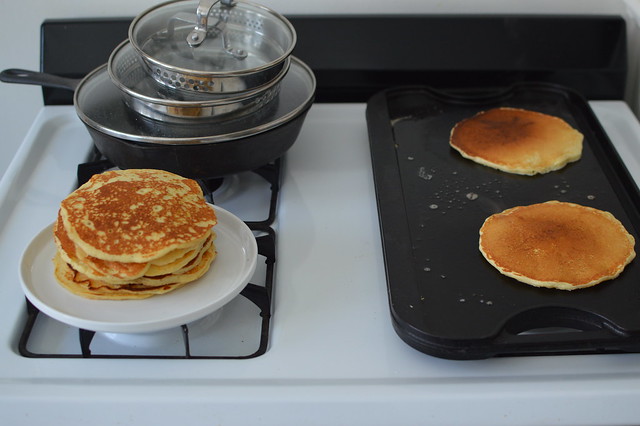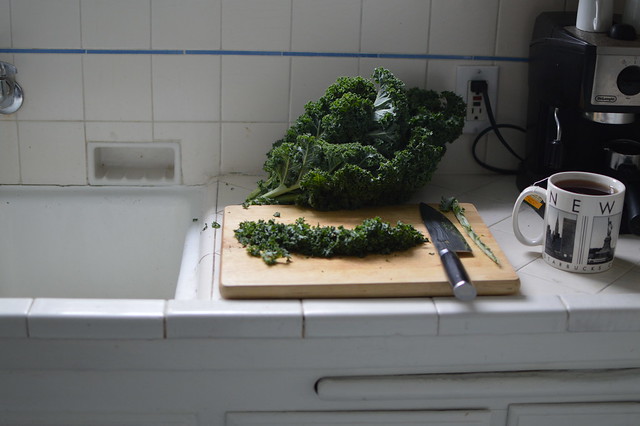You will need:
A 3-ring binder (I'd recommend a 1.5")
Page protectors
Tab dividers (~5, make sure they stick out past the page protectors - like these)
The ability to do basic arithmetic
{meal planning on sunday}
Figure out how many servings you need each week. I only meal plan for the weekdays, because our weekends are generally crazy and we aren't at home much.
Ask yourself - Are you planning for just dinners? Dinners with leftovers to take for lunch? How many days a week do you buy yourself lunch? Now do the math.
D and I eat in almost every night most weeks, so I count on 10 servings minimum (5 nights x 2 people). I take my lunch to work most days, but probably one day a week I eat soup or something instead, so I count myself for 3 - 4 lunches. D always eats out on Tuesdays and usually at least one other day during the week so I only count him for 2 - 3 lunches. This gets us to about 16 servings of food needed during the week.
Decide how often you're willing to cook and how high your tolerance for leftovers is. I love leftovers and D is perfectly happy with them. We also have limited time and there's no way we are going to cook every night. Right now I plan to cover our 16 servings with 3 meals throughout the week. If you hate leftovers, you are going to have to cook more often. There isn't really any way around it. In that case, I'd recommend having a good supply of quick meal recipes on hand.
Choose your meal categories. This will just depend on what you eat most often. We have a big salad (usually grains + veg), one meal with either meat, lentils or pasta and one quick meal (burritos, quesadillas, eggs, etc). You might want one meat, one pasta, one fish. Or whatever. Don't get overly fussy about the categories. Soba noodles are pasta, obviously, but I count soba noodle salad in my large salad category. Because it's cold, so to my mind it is salad. You can also cook more than one meal from each category, if you want pasta 2x per week or something. Having this structure can be really helpful for keeping yourself on track if you have specific goals. When I lumped together meat/lentils/pasta into one weekly category, our meat consumption suddenly went down because we now eat meat every second or third week instead of weekly, without even thinking about it. I just keep meat, lentils and pasta in three separate tabbed sections, which helps me use them more evenly. If I had lentils the week before, I'll tend to pick a pasta or meat dish this week.
Figure out what your goal servings are for each meal, based on your weekly needs. I usually aim for a 6 - 8 serving salad (which sometimes means I need to double the recipe), a 4 - 6 serving meat/lentils/pasta meal and a 4 serving quick meal. I use this spreadsheet right now (previously used this one) but you can easily customize your own.
Gather up your base recipes. When I did this I had a ton of recipes floating around. The more superfluous recipes you have, the longer your meal planning takes. Just flipping through them eats up time each week. Strip out just the ones you are likely to make on any given weeknight. I kept my huge recipe binder for special occasions, holidays, desserts, etc. My weekly binder is much slimmer and only has meals I'm likely to make during the week.
Type up your quick meals (if you're using this category) on a single page and add it to the front of the binder. These aren't recipes, they're reminders. Think about what you cook when you don't have time for anything complicated. I made quick notes about what ingredients we needed for each meal and that was basically it, along with a short description of how to cook a frittata.
Organize your binder. Label your tabs with your categories and start dividing up your recipes. I keep all my recipes in page protectors so they are slightly less disgusting. When I did this I noticed that our big salads category was a little skimpy, so I specifically searched around for some recipes to fill out this category, printed them out and put them in the binder. After I make one for the first time we decide if we want it again, if not, I toss it out.
Do your meal planning (see old post for details). Look over your schedule for the week to see if you need to plan low (going out during the week) or high (guests coming over for dinner). Check your fridge to see if you have leftover ingredients you need to use up. Choose the specified number of meals from each category. Pull those recipes out, make your grocery list and then put them back in the front of the binder, before the dividers. This will make it faster to pull them out as you cook during the week. Check your grocery list against your pantry. All of this should take no longer than 20 minutes, once you have the system set up. I don't agonize over choosing meals. You're going to eat every single day of your life and there are no wrong choices. Once you've got your lists, shop. D and I usually split up the shopping based on convenience and when we need the items.
Roughly schedule your cooking nights based on your schedule that week. Lately I've been designating one free evening and cooking two meals. The grain salads are usually better the next day, so I'll make our salad and stash it in the fridge. At the same time, I'll make our other big meal for the week. This saves me a little time because I'm only washing the knives, cutting boards, mandoline, measuring cups, once. Bulk cooking is not my favorite thing to do. I'm having to juggle two recipes, make sure I'm not mixing anything up, there is a lot of chopping and washing vegetables. If I had shorter days, I would absolutely make dinner almost every night, because I enjoy cooking, but this works.
Have a back up plan! Sometimes we have a week where we end up eating more and Friday night rolls along and we're out of planned meals. Or we don't feel like eating leftovers. I keep a couple frozen meals from Trader Joe's in our freezer for those situations or, rarely, we'll order takeout or, more frequently, we'll decide to have an impromptu meal out. I have a relatively low tolerance for take out because I love it if it's an indulgence but it bums me out if we're doing it because we don't know what else to do. Then it doesn't feel exciting, it feels depressing.
Stop trying to be perfect. Sometimes I don't plan correctly and we run out of food. Sometimes I overplan and we have too much food and get sick of it. Sometimes I try a new recipe and it isn't that great but I feel like I have to soldier through the leftovers anyways. This is the fastest route to a week of takeout and guilt. If you make something you really don't like, toss it out and change your plan. (I have a really hard time doing this and will instead attempt to avoid the fridge - I hate waste, but delaying it doesn't change it)
{scribbles}
The upside to meal planning is that you save time and money. Quite a bit of money, actually. When I'm being good about meal planning, our grocery spending is shockingly low (compared to our usual, at least). It's because I don't buy on impulse and we're better about using everything up. Our weekly grocery needs aren't huge, which makes the shopping way easier. And it just doesn't take as much time or effort as you might think. This sounds insane when I write it all out but I promise you that I usually spend 15 minutes max thinking about our meals and writing up our grocery list.


